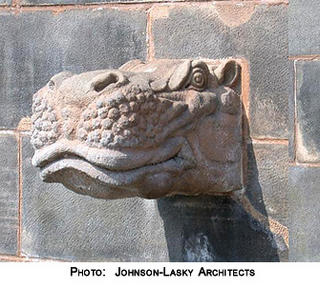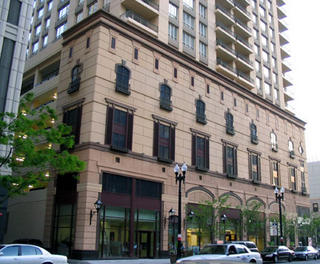The Philadelphia Inquirer's architecture critic Inga Saffron has written a
cogent overview of the life of Edmund Bacon, the legendary and influential Philadelphia planner who died on Friday at age 95. By the time I read Bacon's
The Design of Cities in 1975, his legacy was already being discredited. As Saffron relates, his large-scale projects often traded squalor for sterility, and he pushed the development of expressways that carved up the city, at the expense of its residents for the benefit of those who were just passing through. Yet, although I haven't seen it for thirty years, I still remember the Bacon book, especially the maps and the drawings that tried to lay out exactly how creating a vibrant city was done. The book is still used in university courses today.
The best planners imagine better new worlds that the general public may have no interest in. More likely, they may be actively hostile, with a strong attachment to the present, in all its corruption. That's the rub. Although planners are never elected, they don't stand a chance unless they master the political game. And if they do that too well, we run the risk of them becoming autocratic "power brokers," of the type of New York City's
Robert Moses.
If Moses had died in 1945, we would have a very different, far more positive view of him than we have today.
Robert Caro may never have existed. We would remember him as a reformer whose projects helped revivify New York under mayor Fiorella Laguardia. Instead, Moses held on, becoming more powerful and enduring than any mayor or governor, a master at subverting the democratic process and pushing through schemes that were increasingly destructive of the city's essential character and fabric.
Bacon kept
Louis Kahn out of building in downtown Philadelphia. Would Kahn's own set of bold visions - a new
city hall like a tinkertoy construction on steroids, and huge parking garages surrounded by office and residential towers - been an improvement on Bacon's vision? Or would they have just been the flip side of the coin of Bacon's own decidedly mixed achievements?
Daniel Burnham might have done it best. He created the landmark
Plan of Chicago that bears his name in 1909, and died just four years later, before any curdling of attitude or reputation could set in. Edmund Bacon retired in 1970, at the top of his game, allowing him to spend the next several decades sniping from the sidelines, and to continue refining his beliefs to the point where he made his last big stand, at age 93, taking a
spin on a skateboard to protest the city's banning of skateboarders from LOVE park, the plaza he created across from city hall.















